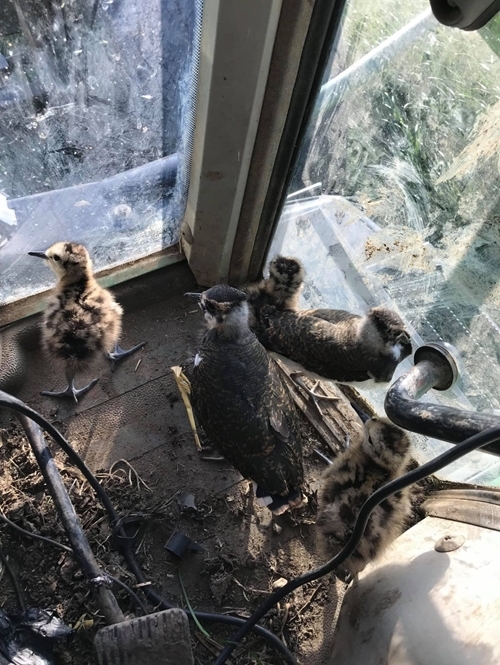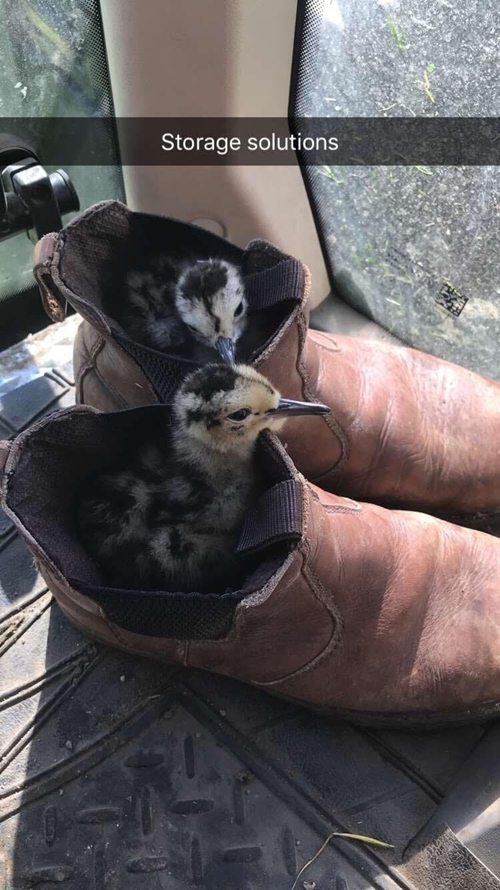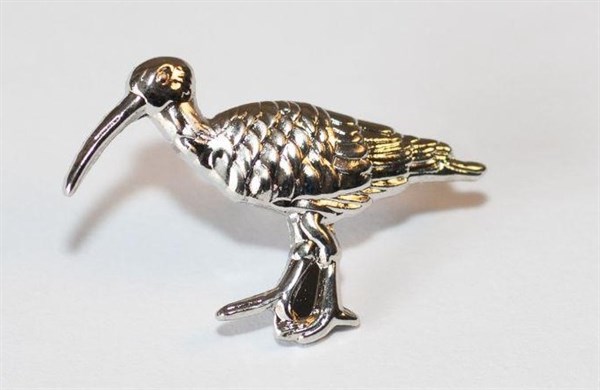Guest Blog by Amanda Perkins, Manager, Curlew Country (The UK Lowland Curlew Recovery Project)

Back in June, I took part in a recording of ‘On Your Farm’ recorded at Bolton Castle which is at the top of Wensleydale. Tom Orde-Powlett, son of the moor owner Lord Bolton, has hosted an event to celebrate curlews each year and the highlight has been curlew safaris which he organises. Caz Graham, On Your Farm’s producer and presenter was there to experience a safari and get a range of views from Tom, the keepers and the guests. The safaris are to give people the opportunity to see ground-nesting birds and to learn more about their habitat and its management. You can listen to On Your Farm 18.08.19 here.
A trip up onto a managed moor like the one at Bolton Castle is a treat. Dan a keeper on the estate and our safari guide was engaging and impressive. His knowledge was not confined to grouse management. We talked about farming, conservation, funding and how these elements integrate to protect moorland breeding wader strongholds. He resonated passion for the breadth of his work and pride for what is being achieved. We saw a suite of waders, many from good viewing spots thanks to Dan’s detailed knowledge of their whereabouts.
Dan was interested in The UK Lowland Curlew Recovery’s (Curlew Country’s) headstarting experience and asked about the success of natural nests in the project. He told us about the farmers on the edges of the moor who still rescue eggs from rolling and harrowing and chicks from mowing by lifting them into the cab temporarily and then carefully returning them to the position where they were found. Curlew Country farming partners talk about doing this historically, but we have not seen this in recent years.
I hear local reminiscences of clouds of curlew and lapwing rising from Marches fields, but it has been hard to imagine this abundance of waders, given the sparsity of curlew pairs dotted over the landscape in which Curlew Country carries out its recovery work. We were enthralled by the cacophony of sounds coming from the moor on our safari. My favourite moment was the chorus that signalled linking up with Tom OP, Caz and their fellow guests to record. As Karen Lloyd (Cumbrian curlew champion and artist) and I walked along to meet them, snipe were drumming overhead and continued to do so during our interview. It was enchanting and distracting in equal measure, but sadly did not make it onto the tape.
Caz’s gentle style masked a determination to address the topical, but generally negative issues prevalent in the media about moorland management. We had seen the results of good practice, but Tom OP acknowledged that there are still a few examples of bad practice, which irk those trying to do the right thing. He talked about the many good outcomes exemplified on the estate, including the number of successful breeding waders which it supports. Karen talked about her re-appraisal of grouse shooting, after visiting Tom and getting involved with the Curlew Festival at the castle. Her views had previously reflected those that she heard and read in the media. She talked about the ring ouzels, merlins and hen harriers that she had seen on other visits.

At one point when I was rambling on about curlews for the recording, Caz stopped me initiating an apology from me and a laugh from Tom OP who said his wife reserved a special glare for rambling on about curlews. Meanwhile, my poor long-suffering curlew widower husband, was rather enjoying the ‘work stop’ (we had not realised that we would be out on safari) on our way to collect our son’s belongings from Newcastle uni. He was reviving memories of happy times he had spent working on another moor passionate about conservation in neighbouring Swaledale.
After recording, we resumed our drive continuing to debate more controversial issues. The general licence ‘affair’ was still current. We asked Dan about crow control. Unsurprisingly he described with examples the crow predation issues which would escalate without good control. We had also seen evidence of heather beetle destroying the heathland vegetation on the moor. This was causing much concern on the estate for both the grouse and other ground nesting birds.
Heather burning, a traditional management technique is considered vital to regenerate a mosaic of vegetation suitable for the needs of a range of species, including grouse It is a skilled job, dependent on weather, soil conditions and vegetation growth stage and must be undertaken responsibly and carefully to avoid peat loss. It is a regular job of moorland managers and helps promote germination of the seedbank where heather has been killed by beetle. Burning on moorland where peat is deeper than 40 cm has largely been prohibited, which puts the mosaic of structural variation in the vegetation at risk and has raised concerns about increased risk of wildfires due to increasing fuel load.
Resuming our seats in the safari vehicle, we noticed and admired fine newly repaired moorland tracks. Weeks afterward, I received news that a company called ‘Making Trax’ is generously contributing a percentage of its takings to Curlew Recovery work. Curlew Country and the Game & Wildlife Conservation Trust curlew appeal will both be beneficiaries. For every metre of track created they are donating 25p to curlew recovery and they are encouraging their client to match their donation. By complete co-incidence it was the work of ‘Making Trax’ that we had commented favourably upon during the Bolton Castle safari.
Curlew Recovery needs all the help it can get. We are in the extraordinary situation in our farmed lowland landscape where our farming partners, so often (wrongly) accused of disinterest in conservation issues, are keen to support curlews now but cannot do so without realistic financial rewards for loss of business income. The current agri-environment schemes will not provide what is necessary, nor will their proposed successors.
In addition, funding schemes also need to make provision for effective predation control. This is needed at a strategic scale to prevent curlews from disappearing from lowland landscapes altogether and to establish a sustainable future for them. Increasingly, thoughts seem to be turning to the short-term single outcome stop-gap technique of headstarting, even though it is costly, and will not deliver sustainability for curlews or the many other environmental benefits, which managing for waders will.
Some argue that if lowland populations are lost through lack of this support, at least curlew populations will survive in their stronghold of the uplands where moorland management, much funded by grouse shooting enables a range of ground-nesting birds to thrive. Last week I met someone working with waders in the uplands and of many years of experience in bird conservation. We talked about the challenges of the lowland situation and then turned to curlew prospects in the uplands. Her sad verdict was that given the increasing challenges, often ironically brought about by organisations charged with protecting wildlife, even in the uplands there will be ‘death to curlews and other ground-nesting birds by a thousand cuts’.
You can support curlew recovery by:

Get your Curlew Supporters Badge for £9.99
You can help us get practical curlew conservation advice to those on the ground by buying one of our curlew pin badges. £5 from the sale of each badge goes to our Action For Curlew project, which is helping to provide advice to farmers, landowners and gamekeepers on the action they can take to reverse the alarming decline in curlew numbers. Badge measures approx 3cm.
View Badge >
or
Buy Now - £9.99 >
100% Secure. All Credit & Debit cards, PayPal, Apple Pay and Google Pay accepted.
